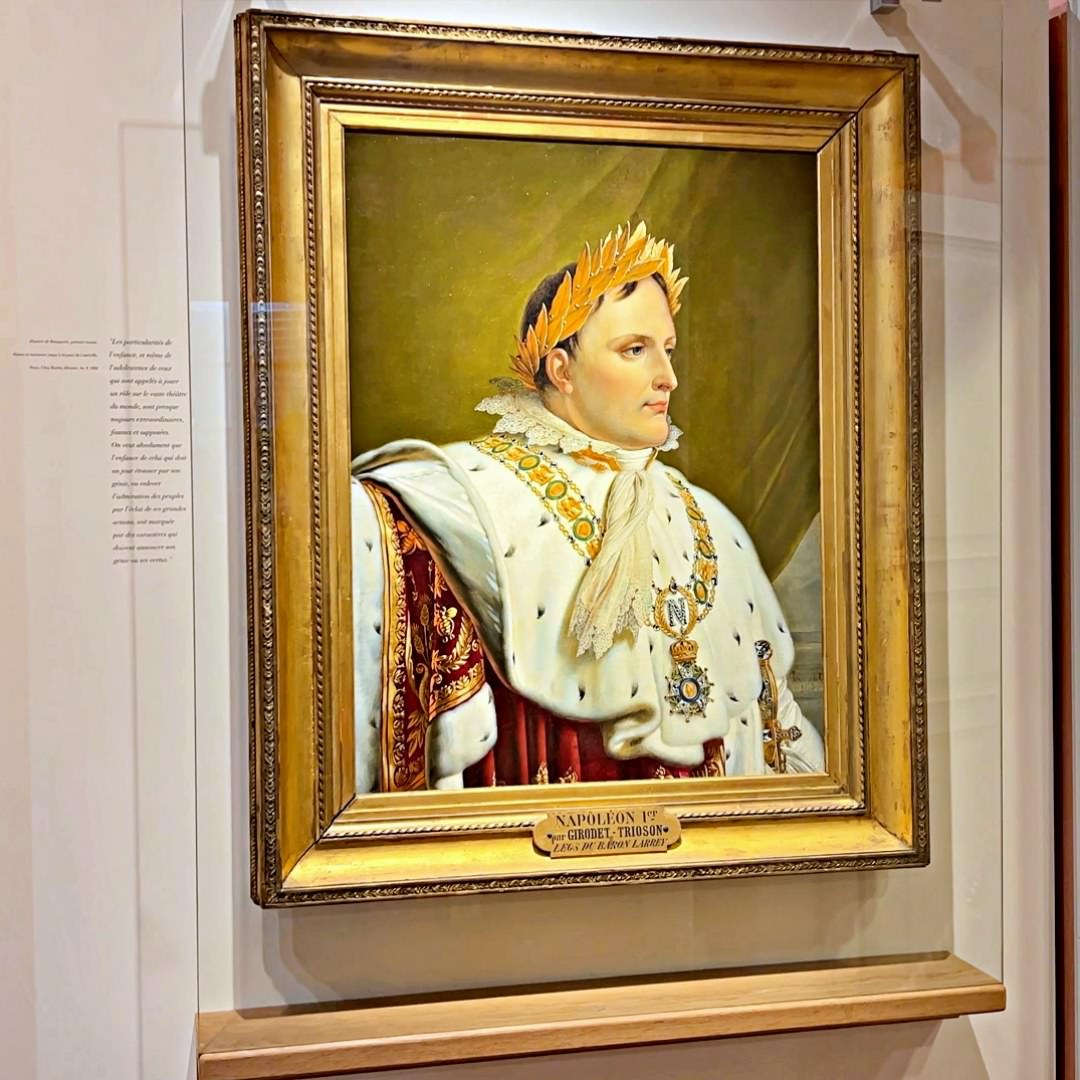Filitosa, a preeminent archaeological site in Corsica, unveils a vivid tapestry of human history dating back to the 6th millennium BC. Discovered in 1946 by Charles-Antoine Cesari and later excavated by Roger Grosjean, it has emerged as a significant link to Corsica’s ancient civilizations. The site is celebrated for its megalithic statues and menhirs, carved around 1500 BC, which depict armed warriors and anthropomorphic features, offering a glimpse into the artistic and societal intricacies of early Mediterranean cultures.
The inclusion of Filitosa in the list of one hundred historical sites of common interest for Mediterranean countries underscores its cultural and historical significance. The establishment of an archaeological museum in 2021 further enhances its role in preserving and presenting Corsica’s rich prehistoric heritage.
Visitors can explore this historical marvel, conveniently located near Propriano, Sartene, and Ajaccio, and immerse themselves in the enigmatic world of Filitosa’s past, making it an unmissable destination for those intrigued by the mysteries of ancient civilizations.
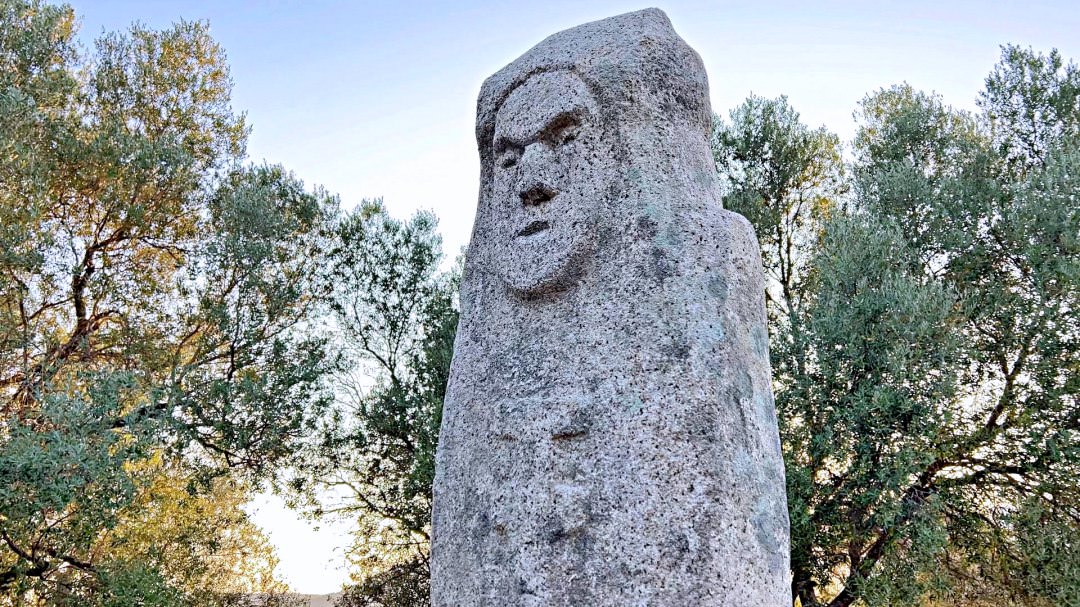
Discovery and Historical Significance of Filitosa
Discovery
The remarkable journey of Filitosa began in 1946 when local farmer Charles-Antoine Cesari stumbled upon granite statues on his land in Corsica. These findings, initially enigmatic, laid the groundwork for one of the most significant archaeological discoveries on the island.
Archaeological Exploration
The site’s true historical value was realized in 1954 when archaeologist Roger Grosjean commenced extensive excavations. Under Grosjean’s guidance, Filitosa transformed from a mere curiosity to a crucial archaeological site, revealing layers of human history previously untapped.
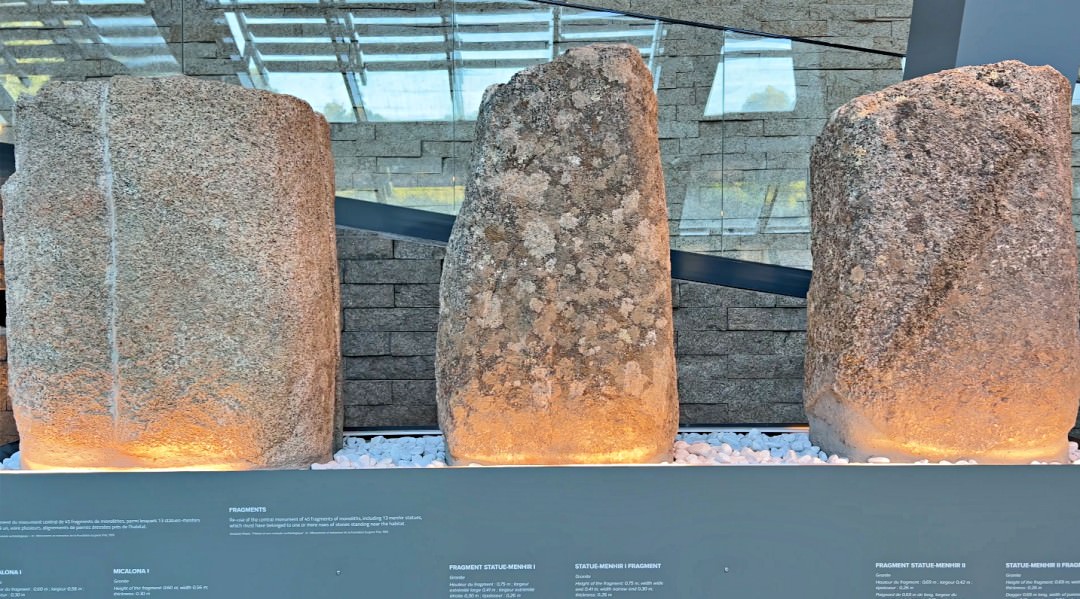
Historical Context
Filitosa’s origins trace back to the 6th millennium BC, marking it as one of the oldest known settlements in Corsica. The site provides a tangible link to the island’s early inhabitants, showcasing their societal structures, cultural practices, and artistic expressions. It stands out for its unique collection of menhir statues, which were primarily sculpted around 1500 BC, offering insights into the prehistoric Corsican community’s lifestyle and beliefs.
Cultural Importance
Filitosa is not just an archaeological site; it represents a vital piece of Corsican and Mediterranean history. The intricacies etched into the menhirs – from facial features to weaponry – illustrate a society that was both artistically inclined and strategically aware. This blend of creativity and utility underscores the complex nature of early human civilizations in the Mediterranean region.
Archaeological Wonders of Filitosa
Megalithic Statues and Menhirs
Filitosa is renowned for its striking collection of megalithic statues and menhirs, which date back to around 1500 BC. These sculptures are distinguished by their anthropomorphic features – faces, weapons, and armor details are intricately carved into the granite. The largest among them, Filitosa V, stands at 3 meters high and is the only statue on the island adorned with two life-size weapons, making it a focal point of the site.

Torrean Structures
The archaeological site also includes a series of Torrean structures, named after the Torréens who conquered the area around 1300 BC. These structures, characterized by their circular design and unique architecture, are believed to have served various functions. While some suggest they were religious temples or meeting places, others propose they were strategic fortifications or storage facilities. Their true purpose, however, remains a subject of academic debate.

Significance in Prehistoric Corsica
Filitosa offers a window into the prehistoric era of Corsica, showcasing the artistic, societal, and technological advancements of the island’s early inhabitants. The site’s complex history, spanning from the 6th millennium BC, reflects the various cultural influences and shifts in Corsica’s prehistoric period. The menhirs and Torrean structures not only provide insights into the religious and daily lives of the ancient Corsicans but also connect the island to the broader context of Mediterranean prehistory.
Theories and Interpretations of Filitosa
Filitosa has long intrigued scholars and visitors alike with its array of megalithic structures and statues. The site’s enigmatic nature gives rise to various interpretations and theories about its original purpose and the meanings behind its stone formations.
Purpose of the Megaliths and the Site:
- The primary purpose of the megaliths at Filitosa, which date as far back as the 6th millennium BC, remains a subject of debate among historians and archaeologists.
- Some experts propose that these megaliths served as territorial markers, signifying ownership or boundaries of ancient communities.
- Others suggest a more ritualistic or religious role, speculating that they could have been used in ceremonies or as places of worship, considering their careful placement and construction.
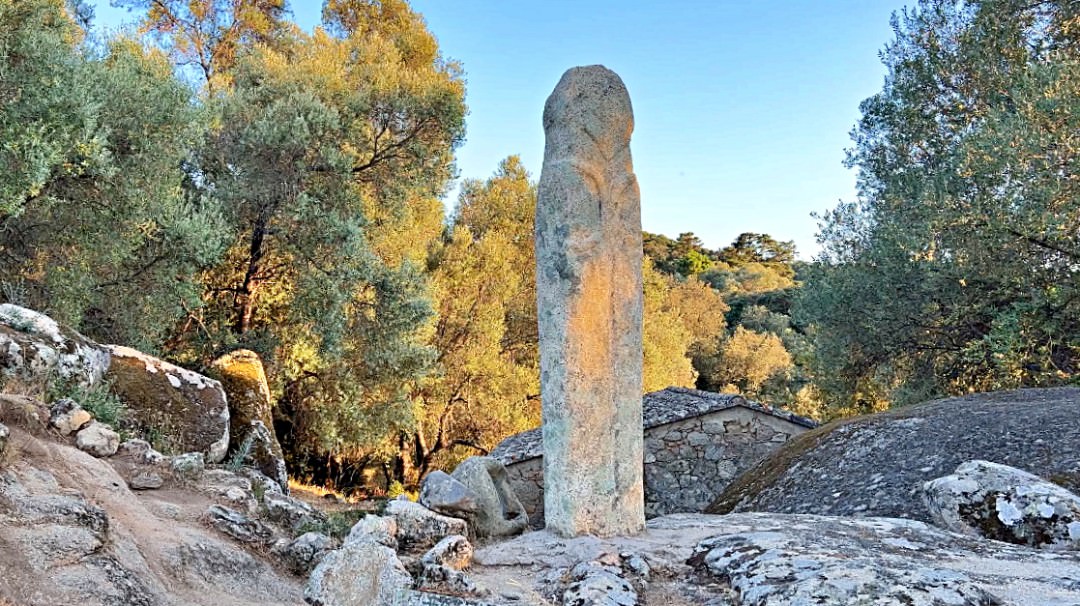
The Shardanes Connection:
- A fascinating aspect of Filitosa is its potential connection to the Shardanes, a group among the mysterious ‘Sea Peoples’.
- Recent research posits that Filitosa could have been a crucial site for the Shardanes, evidenced by the warrior-like features on some statues.
- These statues, adorned with helmets and weapons, are thought to possibly represent the Shardanes themselves, hinting at a connection with the wider Mediterranean during the Late Bronze Age.
Interpretations of the Statues:
- The statues at Filitosa, especially the statue-menhirs, are the subject of varied interpretations.
- Many view them as warrior symbols, given their depiction with swords and armor, suggesting a society deeply engaged in martial culture or venerating warrior heroes.
- Another interpretation sees them as territorial markers or tribal totems, symbolizing the presence and dominance of a group over the region.
- Additionally, there are theories that consider these statues to be religious icons, perhaps representing deities or ancestors worshipped by the prehistoric Corsican communities.

Filitosa continues to be a site that captures the imagination, with its megaliths and statues offering silent testimony to a rich and complex past. The varying theories about their purpose and the site’s connection to broader Mediterranean history only add to the allure of this prehistoric site, making it a must-visit for those interested in the mysteries of ancient civilizations.
Filitosa in Modern Times
Over the years, Filitosa has evolved from an archaeological treasure into a renowned tourist attraction. This transformation was significantly bolstered by the establishment of a dedicated archaeological museum in 2021. The museum serves as a custodian of the site’s rich history, housing a vast collection of artifacts and offering educational insights into the ancient civilizations that once thrived in Corsica. Its interactive exhibits and interpretive displays provide a deeper understanding of the site’s archaeological significance and the historical context of the artifacts found.
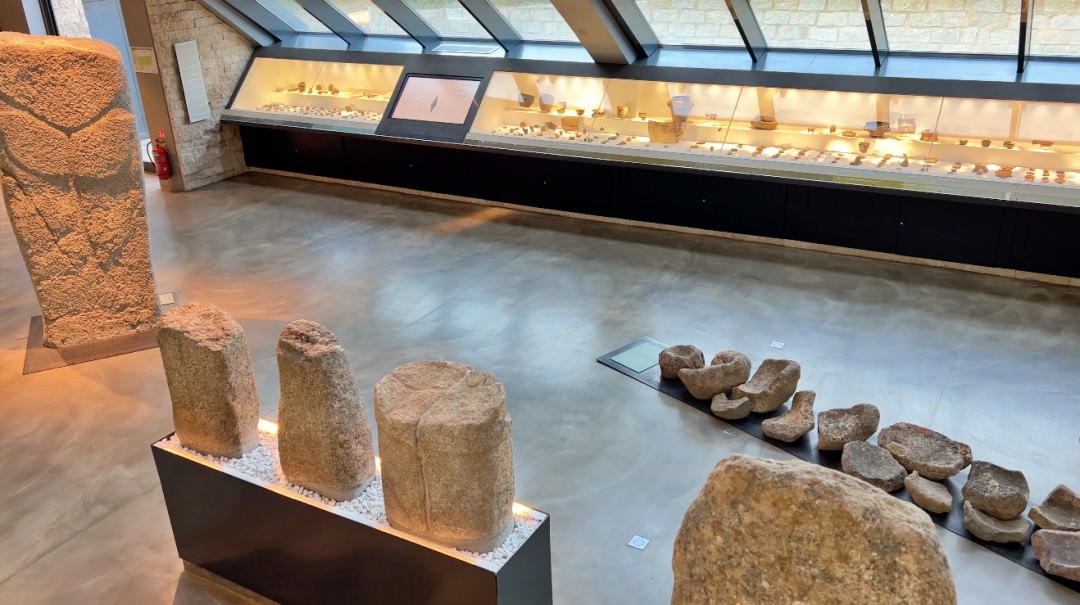
Adding to its prestige, Filitosa has been recognized as one of the hundred historical sites of common interest for Mediterranean countries. This accolade not only underscores Filitosa’s importance in the Mediterranean’s prehistoric narrative but also highlights its role in fostering a greater appreciation of the region’s shared heritage. This recognition has further enhanced Filitosa’s status as a key cultural and historical landmark, attracting scholars, history enthusiasts, and tourists from around the globe.
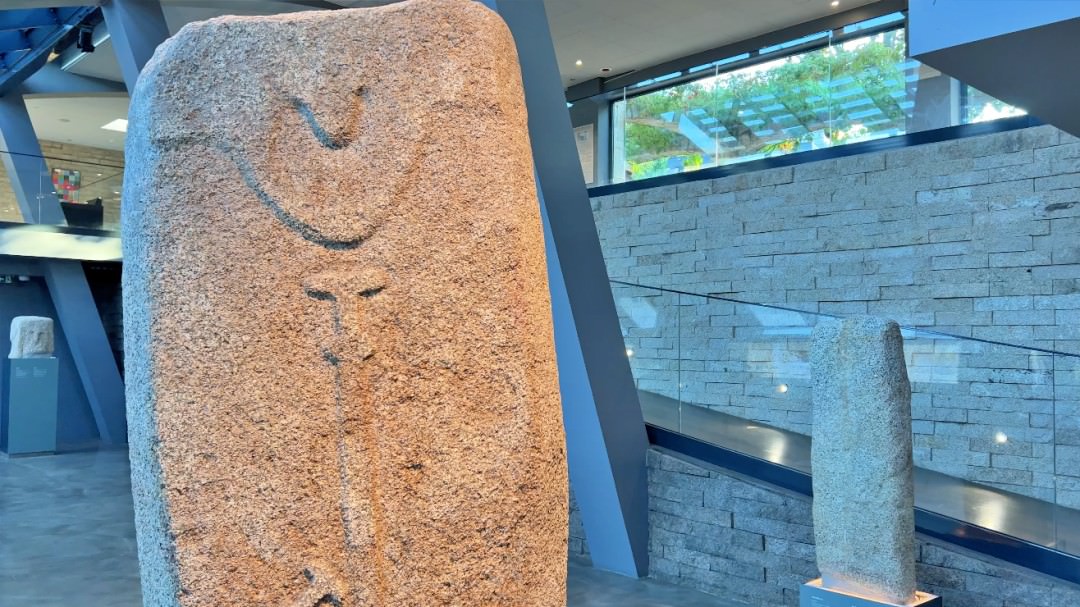
Visiting Filitosa
Location and Accessibility: Filitosa is conveniently situated just 20 km from the lively town of Propriano, a mere 30 km from the historic town of Sartene, and approximately 50 km from Ajaccio, Corsica’s capital.
Visiting Hours and Admission:
Filitosa is open for exploration of its ancient mysteries from April to October, between 9 AM and 7 PM. The admission fee is set at 9 euros for adults and 7 euros for those aged 6-17. Discounts are available for groups and individuals with disabilities. Children under 6 can enjoy free entry, making Filitosa a family-friendly destination.
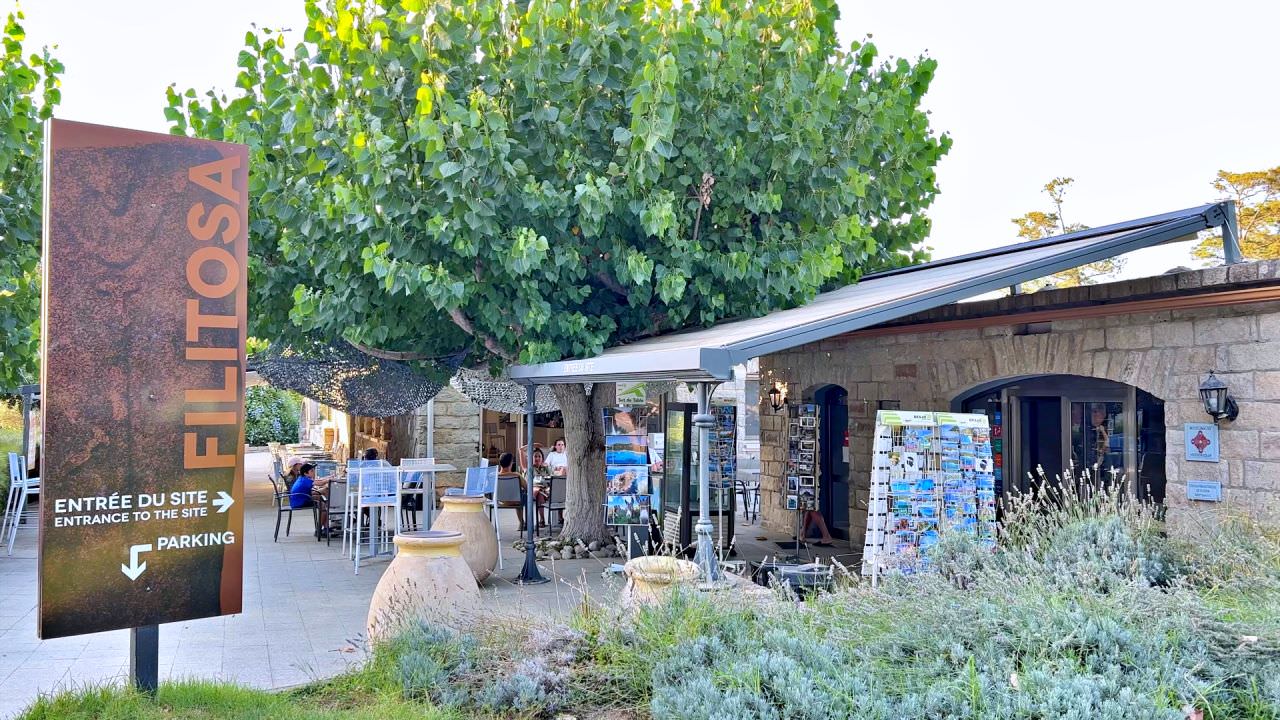
Tour Highlights:
- Megalithic Menhirs: The heart of Filitosa is its array of megalithic menhirs, towering granite statues dating back to 1500 BC, each etched with human-like features and symbols of ancient warriors.
- Torrean Structures: These circular, enigmatic structures, believed to be from around 1300 BC, add to the site’s historical allure, offering insights into ancient architectural practices.
- Archaeological Museum: Opened in 2021, this modern museum houses a wealth of artifacts unearthed from Filitosa, providing context and depth to the outdoor wonders.
Visitor Tips:
- Allocate around 1.5 hours for a thorough exploration, though the enchanting atmosphere often entices visitors to linger longer.
- Opt for guided tours to gain deeper insights into the site’s rich history and significance.
- The museum visit, ideally at the end of the tour, enriches the understanding of the artifacts and the people who once inhabited this land.
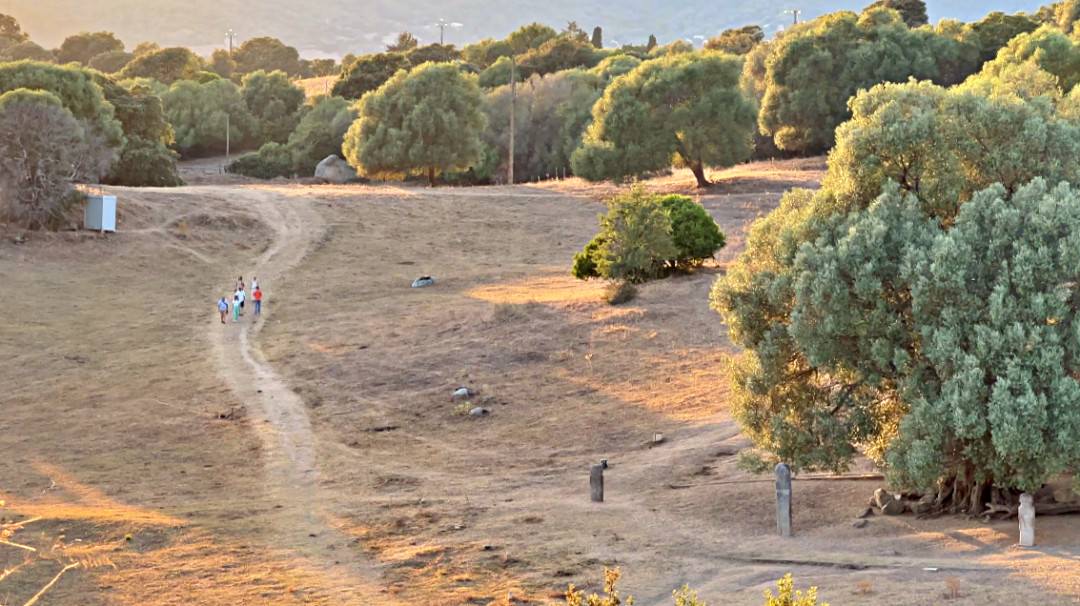
Filitosa’s Cultural Impact
Filitosa, Corsica’s preeminent prehistoric site, is not only an archaeological marvel but also a cultural cornerstone. Its influence on local culture and arts is profound, inspiring numerous works in Corsican literature and serving as a muse for artists. The statues and structures of Filitosa are emblematic of Corsica’s rich heritage, often featured in regional storytelling and folklore.
Beyond its local significance, Filitosa plays a crucial role in the broader context of Mediterranean prehistory. It offers invaluable insights into the early civilizations of the Mediterranean, linking Corsica with other ancient cultures across the region. The site’s menhirs and Torrean structures provide key evidence of the cultural exchanges and influences that shaped the prehistoric Mediterranean world.
Filitosa, therefore, stands not just as a testament to Corsica’s past but as a bridge connecting the island’s history to the larger tapestry of human civilization in the Mediterranean.
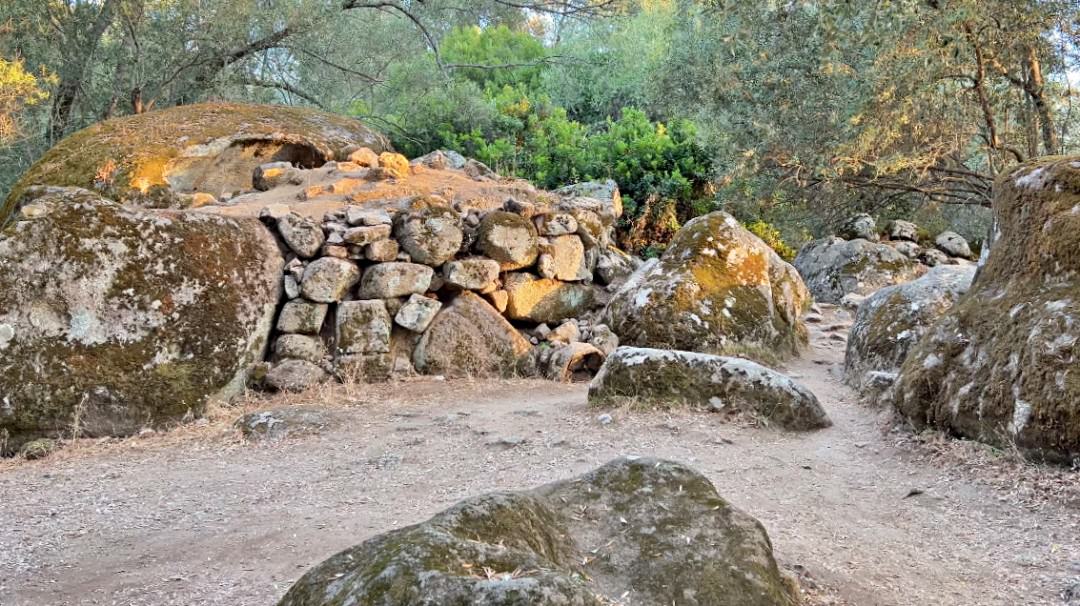
Why Visit Filitosa?
Filitosa presents a tangible connection to human history dating back over 8000 years. Renowned for its megalithic statues and menhirs, this site offers insights into the island’s prehistoric culture and its role in the Mediterranean’s ancient history. The recently opened archaeological museum enhances the visitor experience with comprehensive displays. Filitosa is not only a journey into the past but an essential destination for understanding the evolution of early human societies in this region.
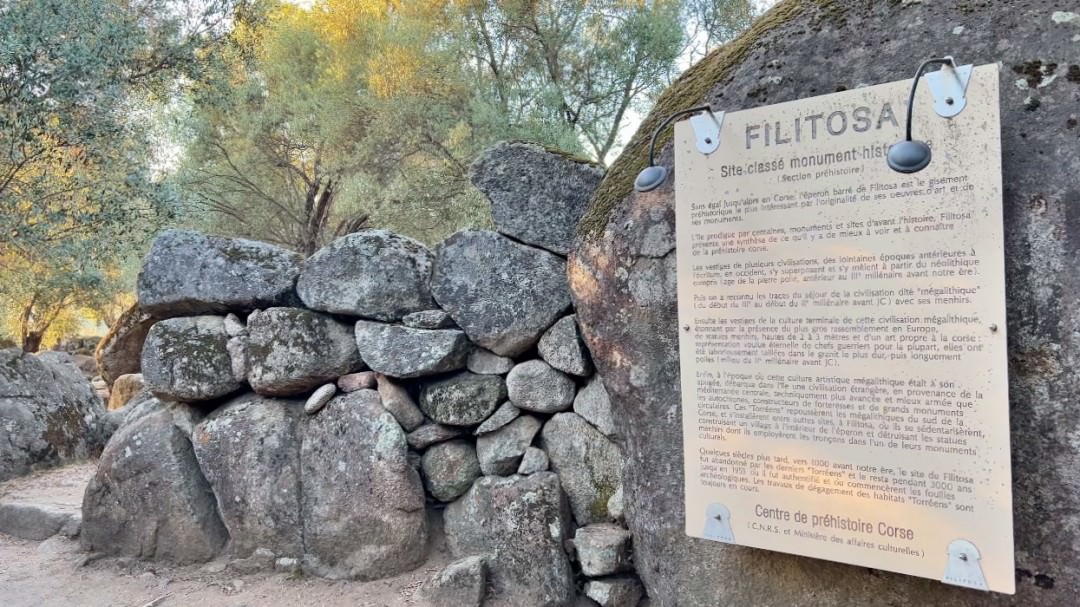
References on Filitosa
Official Filitosa Site: https://www.filitosa.fr/en/
The primary source for the latest information, research, and visitor details about Filitosa.
- Corsica Car Rentals: Unlocking Your Road Adventure

- 14 Days of Coastal Bliss: Unraveling Corsica’s Beach Paradise
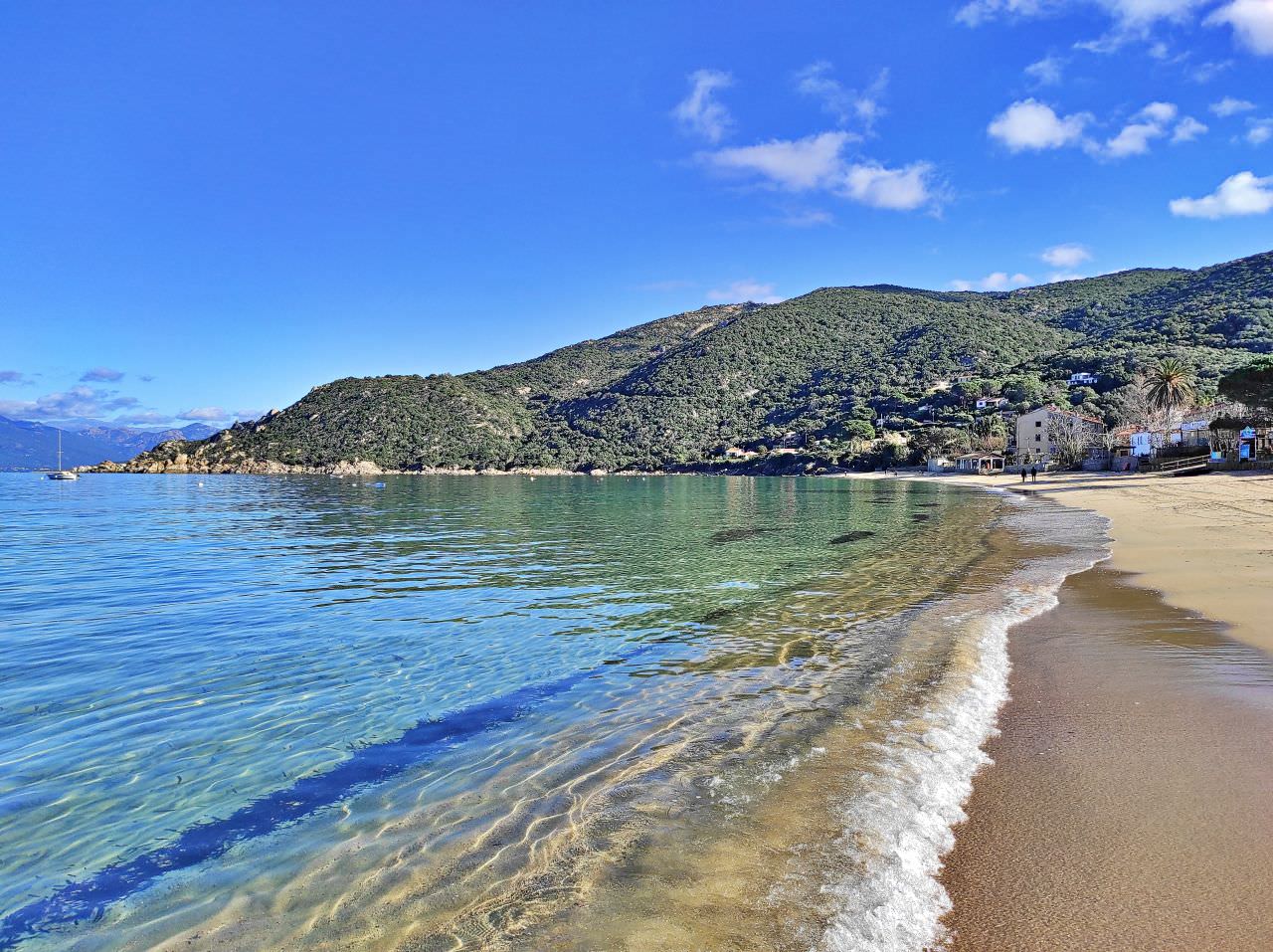
- 14 Days of Corsican Elegance: A Cultural Exploration Journey
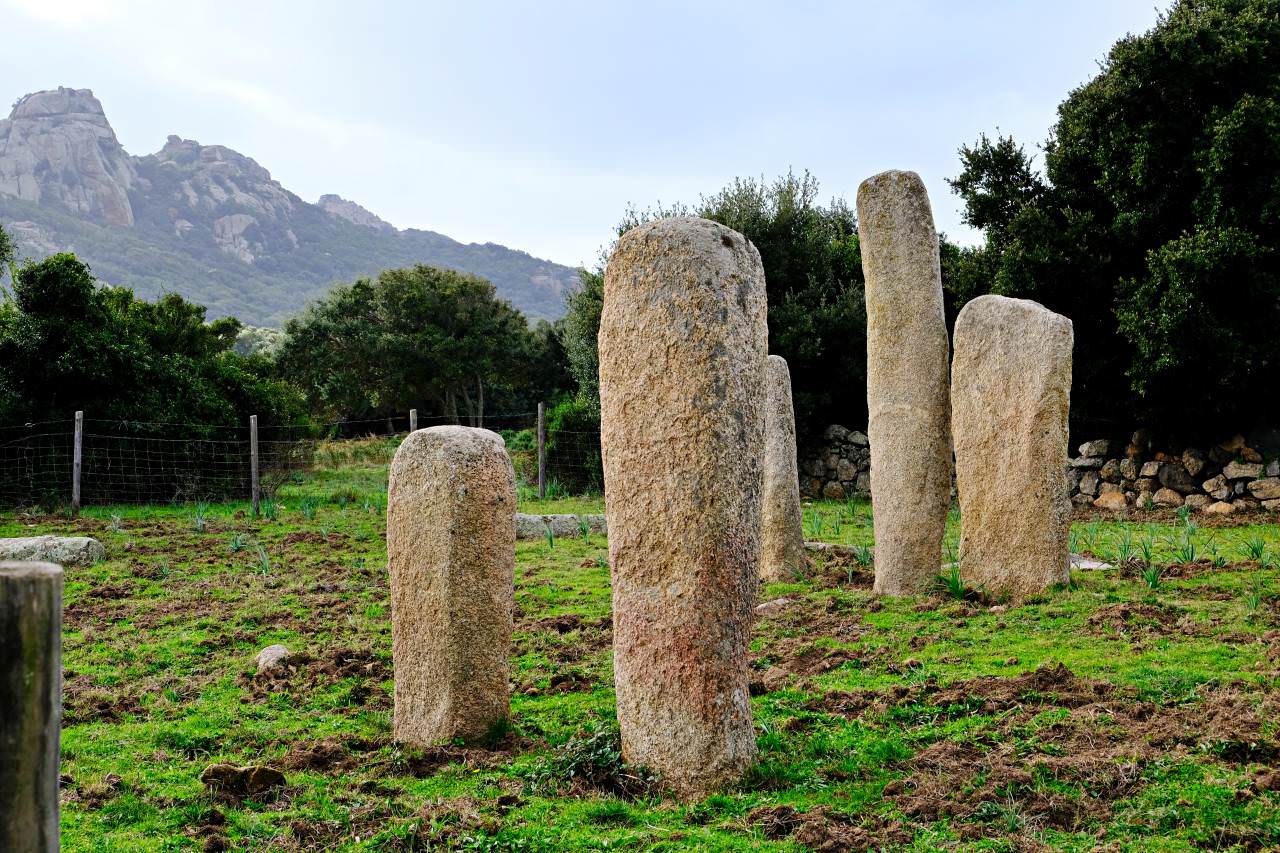
- 14 Days of Corsican Wilderness: Unleashing Nature’s Spectacle

- 10 Days in Corsica: A Beach Lover’s Ultimate Itinerary
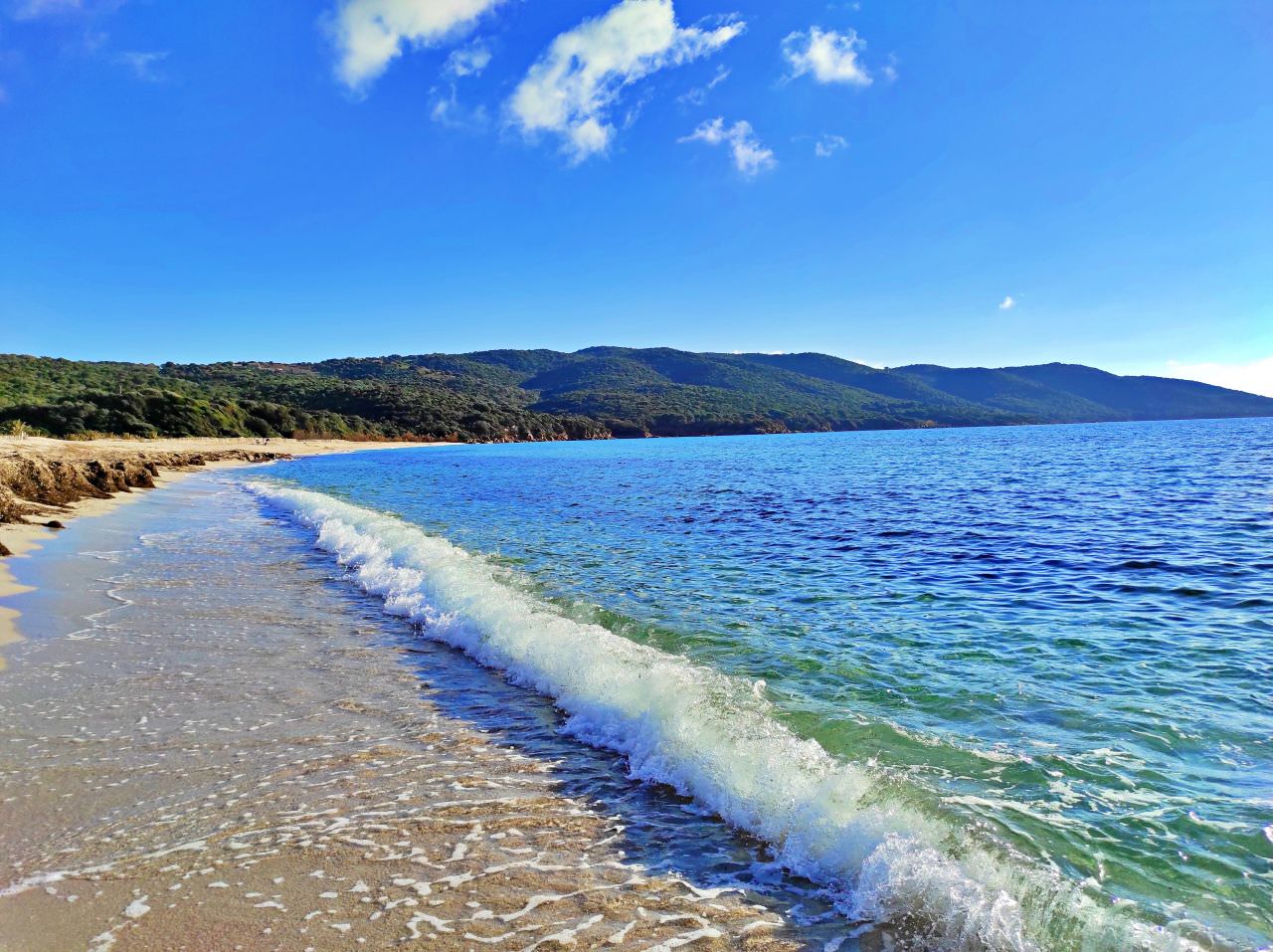
- 10 Days in the Heart of Corsican Grace: A Journey Through Culture and Beauty




